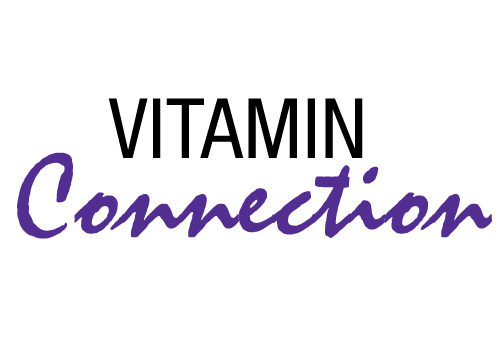Longtime readers may remember that my early longevity research centered on antioxidant synergism and selenium. In 1959, I was researching the possible role of selenium as “Factor 3” proposed by Drs. Klaus Swartz and Calvin Foltz in 1958, when I discovered a synergistic role of selenium and vitamin C. At that time, selenium was not known to be an essential nutrient for humans or other animals. In 1973, Rotruck and colleagues discovered that selenium was a component of an essential enzyme (1) and, in 1989, it was discovered that selenium forms the active site in the amino acid selenocysteine (2), which is now known to be the 21st amino acid specified by our genetic code. In fact, unraveling the mysteries of selenium biochemistry has altered our understanding of the genetic code. We now know that there are at least 20 active biochemicals made in humans that contain selenocysteine as their active site, but we still don’t know many of their functions.
My 1969 patent application was the first to describe antioxidant synergism, the synergistic role of selenium with vitamin C and their roles in cancer prevention (3). Antioxidant synergism arises from the ability of higher redox antioxidants to recharge lower redox antioxidants. The synergism with selenium and vitamin C arises from the selenium-containing enzymes thioredoxin reductases recycling dehydroascorbate to ascorbate. In a 2003 patent, my co-researcher and I described several selenium-containing nutrients of varying potencies (4). The evidence continues to mount on the roles of several selenium-containing nutrients and cancer prevention, and I strive to keep readers informed of this progress.
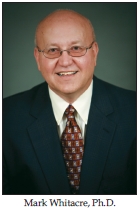 We have chatted in this column with selenium researchers including Drs. Larry Clark, Mark Whitacre and Gerhard Schrauzer several times over the years. This month, Dr. Whitacre will discuss some exciting developments with selenium research and cancer prevention.
We have chatted in this column with selenium researchers including Drs. Larry Clark, Mark Whitacre and Gerhard Schrauzer several times over the years. This month, Dr. Whitacre will discuss some exciting developments with selenium research and cancer prevention.
Dr. Whitacre received his Ph.D. in nutritional biochemistry from Cornell University in 1983, where his Ph.D. thesis advisor was a renowned selenium researcher, Dr. G.F. Combs, Jr. Dr. Whitacre’s research at Cornell University related to selenium’s biochemical role at the cellular level in disease prevention. He has been intricately involved with selenium research for Cypress Systems, Inc. over the past seven years. Cypress manufactures and markets the unique form of selenium that has been shown to lower the risk of cancer in humans, SelenoExcell high selenium yeast.
Passwater: Despite one study, The Select Trial, that used an inappropriate selenium-containing compound in terms of anti-cancer action, the scientific community seems to be abuzz with important discoveries about certain selenium-containing nutrients and cancer prevention. What’s new?
Whitacre: At no point since the birth of selenium research in the early 1970s has there been such advancement in our understanding of selenium’s role in the prevention of disease, especially cancer. To add to the nearly 30-year history of confirming selenium research, the National Cancer Institute (NCI) funded two significant “Gold Standard” trials that will un-blind and complete peer-review publication in 2014. Based on their strong study design, these trials for colon and prostate cancer prevention hold the potential to solidify the role of selenium in cancer prevention and demonstrate, for the first time, that the form of selenium used is critical to the positive disease prevention benefit.
Passwater: Until the release and publication of this new defining research, it is prudent to give our readers a review of the supporting research to date. Let’s begin with what is selenium and why is it important?
Whitacre: Selenium is a mineral found naturally in plants and soil. Good sources of selenium include fish, pork, beef, seeds and whole grains, with the most-concentrated source at 540 mcg/ounce present in Brazil nuts. Selenium occurs naturally in foods almost exclusively in the form of organic compounds—primarily selenomethionine and selenocysteine. These organic compounds represent selenium analogues of the sulfur-containing amino acids methionine and cysteine.
 Selenium helps fight diseases by neutralizing harmful molecules called “free radicals,” which are the unstable molecules that damage tissues. A free radical is an atom, molecule or ion that has unpaired valence electrons, where they are unstable and damaging.
Selenium helps fight diseases by neutralizing harmful molecules called “free radicals,” which are the unstable molecules that damage tissues. A free radical is an atom, molecule or ion that has unpaired valence electrons, where they are unstable and damaging.
Your body needs selenium for the production of several important body compounds, including enzymes (i.e., catalysts) involved in antioxidant protection and thyroid-hormone metabolism. It has been estimated that there are between 50 and 100 different selenium-containing proteins in the human body, including those that build heart muscle, red blood cells and sperm.
Passwater: Here’s where most nutritionists and physicians fall behind. Selenium is not a simple mineral. There are several sources of selenium as part of many different selenium-containing nutrients and there are many different selenium compounds within the body, each having different specific actions. For example, both selenium-containing nutrients and selenium-containing biochemicals in the body can vary in their cancer-protecting efficiencies by more than 1,000 to 1. Yet, most nutritionists and physicians consider all selenium compounds as being the same.
Closely related, some researchers involved in  the SELECT Trial do not understand that foods do not contain reliable amounts of any form of selenium. Plants do not need selenium for their growth and health. The only selenium in plants is taken up inadvertently by the plants. Animals that eat plants also contain varying amounts of selenium determined by the selenium in their diets. One cannot simply look at a food table and know how much selenium is present in any plant or animal. Selenium is essential for human life, yet there are regions where the food supply does not provide adequate amounts of selenium for optimal health or even to meet the official recommended intake. The only sure ways to know if you receive adequate selenium nourishment are to have your blood level measured or to take dietary supplements.
the SELECT Trial do not understand that foods do not contain reliable amounts of any form of selenium. Plants do not need selenium for their growth and health. The only selenium in plants is taken up inadvertently by the plants. Animals that eat plants also contain varying amounts of selenium determined by the selenium in their diets. One cannot simply look at a food table and know how much selenium is present in any plant or animal. Selenium is essential for human life, yet there are regions where the food supply does not provide adequate amounts of selenium for optimal health or even to meet the official recommended intake. The only sure ways to know if you receive adequate selenium nourishment are to have your blood level measured or to take dietary supplements.
Whitacre: Many nutritionists are unaware of the myriad of selenium-containing compounds. Some know only of selenium’s role as an active component—a co-factor, if you will—to an important enzyme system known as glutathione peroxidase (GPX). Critical to the neutralization of harmful free radicals, selenium-dependent GPX is the body’s first line of defense and represents a natural antioxidant agent.
The bottom line is that selenium plays a critical role in our bodies’ natural defense against “free radicals” and the protection of cells, tissues and organ systems.
Passwater: There are many selenium-containing compounds in our bodies, some of which are active against cancer and others that have different roles. They operate through multiple pathways via several hierarchies, and different organ systems have various priorities for them. The main selenium-containing compounds circulating in the blood stream may not at all be related to selenium-anticancer actions that are the result of other selenium-compounds circulating in lesser amounts. Nor may the selenium-containing excretion products or selenium-containing compounds stored in toenails be related to anti-cancer functions.
Which selenium-containing compounds are known to be protective against cancer?
 Whitacre: A frequently explored question through the decades has been, “Does selenium supplementation reduce cancer incidence via its role as a part of the enzyme, glutathione peroxidase?” As important as selenium’s role is as an active component of glutathione peroxidase, selenium is likely to have other equally important biochemical roles in the protection of the cell. Current selenium research is focusing on specific cancer prevention biomarkers, which are unrelated to GPX, but may provide strong indicators to the pending incidence of cancer and provide a basis for the development of preventive responses.
Whitacre: A frequently explored question through the decades has been, “Does selenium supplementation reduce cancer incidence via its role as a part of the enzyme, glutathione peroxidase?” As important as selenium’s role is as an active component of glutathione peroxidase, selenium is likely to have other equally important biochemical roles in the protection of the cell. Current selenium research is focusing on specific cancer prevention biomarkers, which are unrelated to GPX, but may provide strong indicators to the pending incidence of cancer and provide a basis for the development of preventive responses.
Passwater: Let’s look at some of the selenium clinical research and cancer. You earned your Ph.D. in nutritional biochemistry from Cornell University, where your thesis advisor was selenium researcher, Dr. G.F. Combs, Jr. Your research at Cornell University involved the biochemical role of selenium at the cellular level in the prevention of diseases. Dr. Combs, Jr., was a major co-researcher in the Nutritional Prevention of Cancer (NPC) Trial led by Dr. Larry Clark. Can you please review the major findings of the NPC clinical study for our readers?
Whitacre: In 1996, the results of the NPC Trial were published in the Journal of the American Medical Association (JAMA). The NPC Trial was a phase-3 selenium supplementation trial (5) conducted at the University of Arizona, Arizona Cancer Center by Drs. Clark and Combs, Jr., and colleagues. (Dr. Combs, Jr., was at Cornell University at that time).
The NPC Trial demonstrated a significant reduction in cancer in individuals receiving a daily 200-mcg selenium supplement of SelenoExcell. As reported in JAMA, researchers found that subjects who took daily doses of selenium had 63% fewer cases of prostate cancer, 58% fewer cases of colon or rectal cancers, and 46% fewer lung cancers than those not receiving the supplement.
In addition to the 1996 JAMA publication, the prostate cancer prevention results were published in the prestigious British Journal of Urology (6). This publication further validated the “landmark” position of these clinical data and established them as a benchmark in ongoing confirming selenium research.
In follow-up to the Clark and Combs trial, researchers at the Penn State University Cancer Institute in Hershey, PA, confirmed that supplementation with SelenoExcell reduced serum PSA levels, a risk 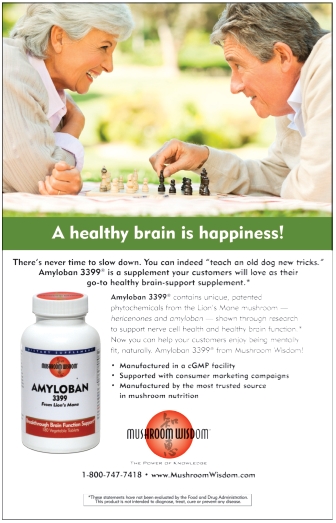 indicator for prostate cancer (7). Prostate cancer presents a major clinical and public health challenge in the USA. It is the second leading cause of cancer-related deaths in men and is second only to lung cancer (8).
indicator for prostate cancer (7). Prostate cancer presents a major clinical and public health challenge in the USA. It is the second leading cause of cancer-related deaths in men and is second only to lung cancer (8).
Passwater: Do the selenium-containing nutrients consumed make a difference in cancer-preventing activity?
Whitacre: Selenium has received a significant amount of attention both in the media and in the scientific community over the past few years. Much of this surfaced when the SELECT (Selenium and Vitamin E Cancer Prevention) trial was prematurely stopped in 2008 (9). When it was announced the trial had been stopped, most media reports assumed that it was evidence that selenium is ineffective against prostate cancer. This statement is considered by many world-leading selenium researchers to be misleading because the SELECT data only relate to the effects of L-selenomethionine supplementation in a selenium-replete population.
Passwater: In contrast, the NPC trial used high-selenium yeast (SelenoExcell) in a selenium-deficient population.
Whitacre: The results of the SELECT trial actually added clarity to the fact that selenium form makes a difference. Many selenium researchers think that the SELECT trial used the wrong form of selenium.
Diet-derived agents that include selenium have been shown to have chemopreventive potential against prostate cancer (5–7, 10–14). Epidemiological and laboratory investigations have shown that dietary selenium is protective against the development of cancer at many sites, including prostate, with form being an important factor (5–7, 10–14).
In the NPC trial (5, 6), supplementation with high selenium yeast (SelenoExcell) in men was associated with an almost 50% reduction in cancer morbidity and mortality, including a 63% decrease in prostate cancer incidence, with subjects having low baseline plasma selenium levels (<122 ng/ml) showing the greatest benefit (14). However, in the SELECT trial, which was designed to test the protective effects of selenomethionine (SeMet) and vitamin E individually and in combination against prostate cancer (9), no protection by SeMet was observed, supporting the possibility that SeMet is a form of selenium which is not highly active against prostate cancer (9). This is consistent with laboratory studies, which have demonstrated that, while organic forms of selenium with varied structures in general have greater 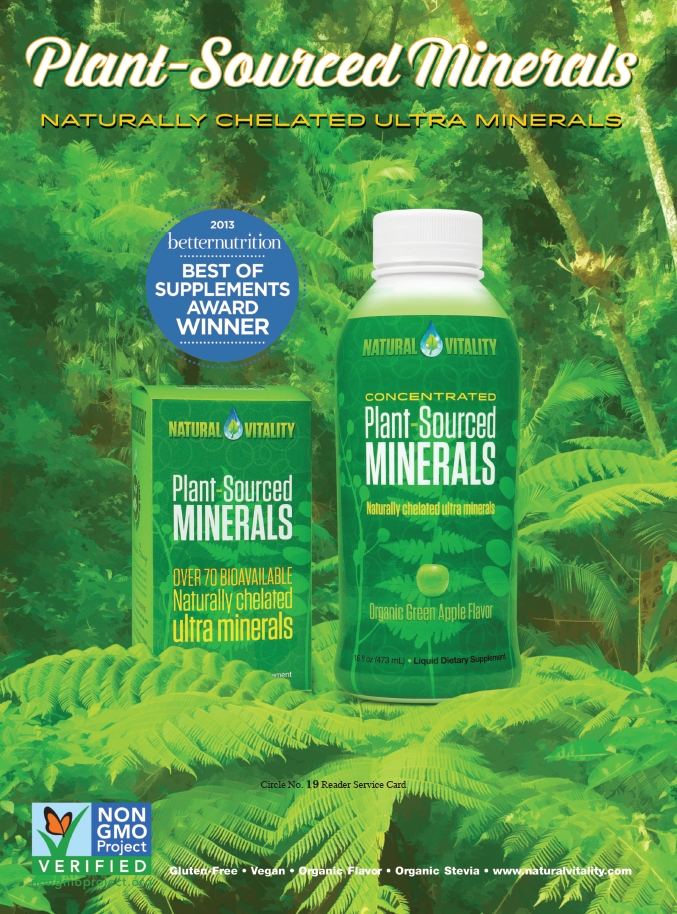 anticancer activities, among those forms tested, SeMet was relatively inactive (15). These results suggest that, while SeMet represents a major form of selenium in SelenoExcell, it is not likely the single form responsible for the chemopreventive properties of SelenoExcell and may involve the selenium complex found in SelenoExcell.
anticancer activities, among those forms tested, SeMet was relatively inactive (15). These results suggest that, while SeMet represents a major form of selenium in SelenoExcell, it is not likely the single form responsible for the chemopreventive properties of SelenoExcell and may involve the selenium complex found in SelenoExcell.
While results from previous studies support the chemoprotective efficacy of SelenoExcell (5–7, 10–14) but not SeMet (9), no direct comparison between SelenoExcell high-selenium yeast and SeMet supplementation in men has been reported up to this time period. Direct comparisons in laboratory animals have revealed differing results. In dogs, Waters et al. at Purdue University first found differences, with high-selenium yeast being more effective than selenomethionine in reducing DNA damage in canine prostate cells (16). Later, in a subsequent study, no differences were observed in tissue selenium levels or in the levels of several prostate cancer-related biomarkers between high-selenium yeast and SeMet supplemented groups (17). However, more recently, in contrast to the aforementioned studies, supplementation with different forms of selenium (e.g., sodium selenite, SeMet and high selenium yeast) resulted in clear differences in gene expression profiles in mice (18).
Passwater: How are SeMet and SelenoExcell different in selenium form?
Whitacre: The high-selenium yeast (SelenoExcell) is a natural food form of organically protein-bound selenium, as opposed to the synthetic form of SeMet used in the SELECT trial. In addition to consisting of SeMet, high-selenium yeast (SelenoExcell) contains a complex of organically bound selenium compounds (e.g., selenocysteine and methylselenocysteine), which very likely could have greater anticarcinogenic activity than SeMet. SeMet provides selenium for selenoprotein synthesis, but it can also be diverted from that pathway into general protein synthesis due to its sulfur-analog methionine, and possibly lose its effect on cancer prevention.
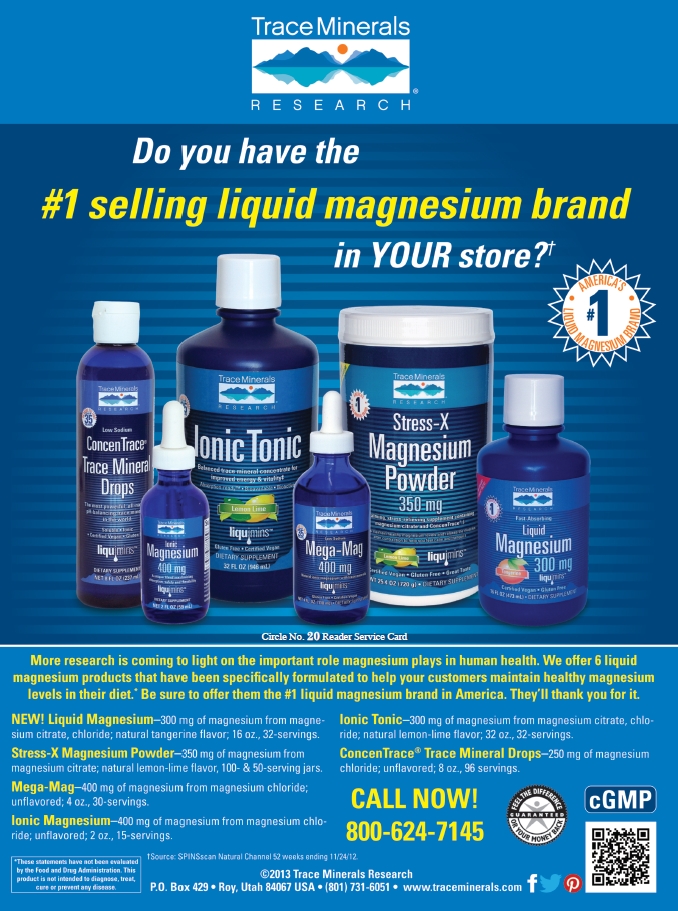 In addition to consisting of SeMet, high-selenium yeast (SelenoExcell) contains a wide variety of organically bound selenium compounds (e.g., selenocysteine and methylselenocysteine), which very likely could have greater anticarcinogenic activity than SeMet. SeMet provides selenium for selenoprotein synthesis, but it can also be diverted from that pathway into general protein synthesis due to its sulfur-analog methionine, and possibly lose its effect on cancer prevention.
In addition to consisting of SeMet, high-selenium yeast (SelenoExcell) contains a wide variety of organically bound selenium compounds (e.g., selenocysteine and methylselenocysteine), which very likely could have greater anticarcinogenic activity than SeMet. SeMet provides selenium for selenoprotein synthesis, but it can also be diverted from that pathway into general protein synthesis due to its sulfur-analog methionine, and possibly lose its effect on cancer prevention.
Passwater: You mentioned that much of the research with selenium nourishment involved GPX, but there are at least 19 other selenium-containing compounds made by the body. Is the cancer-prevention role of selenium related to GPX?
Whitacre: It is interesting to note that all selenium forms (sodium selenite, selenate, SeMet and SelenoExcell) have been shown to increase plasma glutathione peroxidase activity; however, only
SelenoExcell has been shown to reduce cancer incidence, especially for prostate cancer and colon cancer. Therefore, it is likely that the biological role of selenium, in terms of cancer prevention, is something different than its biological role as a component of the enzyme, glutathione peroxidase and the reduction of free radicals resulting from this enzyme.
Passwater: What does the future hold for selenium research?
Whitacre: The pending 2014 publication of the colon and prostate cancer prevention trials will potentially  represent confirming data pertaining to the positive role of SelenoExcell in altering critical cancer biomarkers related to colon and prostate cancer. For the first time in human clinical research, a side-by-side comparison is being made between SeMet and SelenoExcell to evaluate their respective effects on critical prostate cancer biomarkers.
represent confirming data pertaining to the positive role of SelenoExcell in altering critical cancer biomarkers related to colon and prostate cancer. For the first time in human clinical research, a side-by-side comparison is being made between SeMet and SelenoExcell to evaluate their respective effects on critical prostate cancer biomarkers.
Passwater: Thank you, Dr. Whitacre, for bringing our readers up to date on selenium research. WF
Dr. Richard Passwater is the author of more than 45 books and 500 articles on nutrition. Dr. Passwater has been WholeFoods Magazine’s science editor and author of this column since 1984. More information is available on his Web site, www.drpasswater.com.
References
1. J.T. Rotruck, et al., “Selenium: Biochemical Role as a Component of Glutathione Peroxidase,” Science 179 (4073), 588–590 (1973).
2. B.J. Lee, et al., “Identification of a Selenocysteyl-tRNASer in Mammalian Cells which Recognizes the Nonsense Codon, UGA,” J. Biol. Chem. 264 (17), 9724–9727 (1989).
3. R.A. Passwater and D.M. Olson, U.S. Patent #6,090,414, “Method and Composition to Reduce Cancer Incidence,” 1969.
4. R.A. Passwater and D.M. Olson, European Patent 0 750 911 B1 2003, “Composition Containing Selenium to Reduce Cancer Incidence and Extend Lifespan,” 2000.
5. L.C. Clark, et al., “Effects of Selenium Supplementation for Cancer Prevention in Patients with Carcinoma of the Skin. A Randomized Controlled Trial. Nutritional Prevention of Cancer Study Group,” JAMA 276 (24), 1957–1963 (1996).
6. L.C. Clark, et al., “Decreased Incidence of Prostate Cancer with Selenium Supplementation: Results of a Double-Blind Cancer Prevention Trial,” Brit. J. Urol, 81 (5), 730–734 (1998).
7. K. El-Bayoumy, et al., “Influence of Selenium-Enriched Yeast Supplementation on Biomarkers of Oxidative Damage and Hormone Status in Healthy Adult Males: A Clinical Pilot Study,” Cancer Epidemiol. Vol. 11, 1459–1465 (2002).
8. R. Siegel, D. Naishadham and A. Jemal. “Cancer Statistics, 2013,” CA Cancer J. Clin. 63 (1), 11–30 (2013).
9. S.M. Lippman, et al., “Effect of Selenium and Vitamin E on Risk of Prostate Cancer and Other Cancers: The Selenium and Vitamin E Cancer Prevention Trial (SELECT),” JAMA 301 (1), 39-51 (2009).
10. D.N. Syed, et al., “Chemoprevention of Prostate Cancer through Dietary Agents: Progress and Promise,” Cancer Epidemiol. Biomarkers Prev. 16 (11), 2193–2203 (2007).
11. N. Facompre and K. El-Bayoumy, “Potential Stages for Prostate Cancer Prevention with Selenium: Implications for Cancer Survivors,” Cancer Res. 69 (7), 2699–2703 (2009).
12. K. El-Bayoumy, “The Protective Role of Selenium on Genetic Damage and on Cancer,” Mutation Res. 2001; 475 (1–2), 123–139.
13. K. El-Bayoumy and R. Sinha, “Molecular Chemoprevention by Selenium: A Genomic Approach,” Mutation Res. 591 (1–2), 224–236 (2005).
14. A.J. Duffield-Lillico, et al., “Selenium Supplementation, Baseline Plasma Selenium Status and Incidence of Prostate Cancer: An Analysis of the Complete Treatment Period of the Nutritional Prevention of Cancer Trial,” BJU Int. 91 (7), 608–612 (2003).
15. N. Ozten, et al., “Selenomethionine and Alpha-Tocopherol Do Not Inhibit Prostate Carcinogenesis in the Testosterone Plus Estradiol-Treated NBL Rat Model,” Cancer Prev. Res. 3 (3), 371–380 (2010).
16. D.J. Waters, et al., “Effects of Dietary Selenium Supplementation on DNA Damage and Apoptosis in Canine Prostate,” J. Nat. Cancer Inst. 95, 237–240 (2003).
17. D.J. Waters, et al., “Prostatic Response to Supranutritional Selenium Supplementation: Comparison of the Target Tissue Potency of Selenomethionine vs. Selenium-Yeast On Markers Of Prostatic Homeostasis,” Nutrients 4 (11), 1650–1663 (2012).
18. J.L. Barger, et al., “Gene Expression Profiling Reveals Differential Effects of Sodium Selenite, Selenomethionine, and Yeast-Derived Selenium in the Mouse,” Genes & Nutr. 7 (2), 155–165 (2012).
Published in WholeFoods Magazine, April 2014

